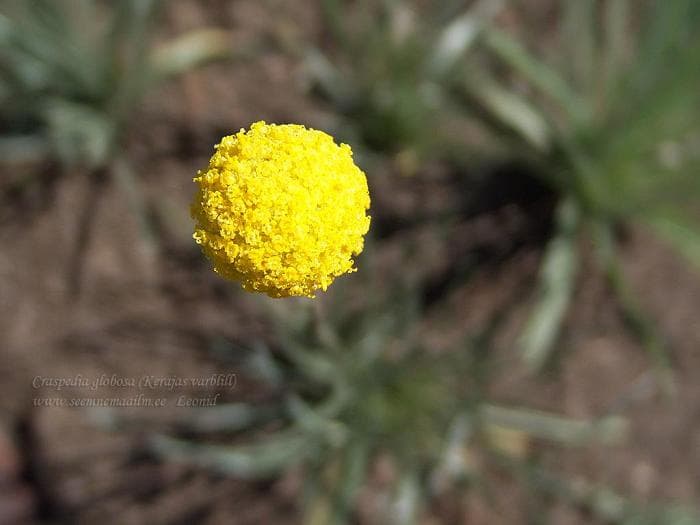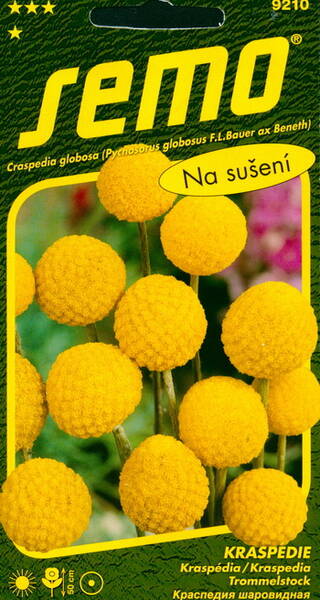The brilliant yellow hue and dense spherical shape of Craspedia globosa make it a striking addition to both fresh and dried arrangements.
Known as the "billy button," or "drumstick," Craspedia is a perennial wildflower of New Zealand, Australia and Tasmania. It has been cultivated in the United States as a garden flower since 1988.
Blooming June to August, the 1 globes last and last. Long, sturdy stems. Height 3. Full sun.
1,0 g = 1500 seeds.

When the inflorescence dries, the flower stalks become very strong and are not damaged, even if they are not hit very hard on a hard surface.
Location: the plant is moisture-loving, cold-resistant and photophilous, blooms within a short day.
Care: watering at the beginning of growth and in dry weather is required. Top dressing after planting, first with nitrogen (2-3 times) and then with full complex fertilizers, to enhance flowering.
Reproduction: by seeds, in 1 g about 1500 pcs. To obtain 100 plants, you need 0.2 g of seeds. Sow in February and put in a bright place. Seedlings are planted in May with a distance of 25-30 cm between plants.
Craspedia is a short-day plant, therefore, even with early sowing, flowering begins only in the second half of August. At the same time, mass flowering occurs in September, and with the early onset of cold weather, very little cutting is obtained. To get more cut, Craspedia can be grown in greenhouses, both film and glass.
Film greenhouses allow you to extend the flowering period until October, which significantly increases the cut yield.
In winter greenhouses, Craspedia can be sown in November, with flowering starting in May and continuing until the following November.
Use: plants are intended for dry bouquets and less often for fresh cutting. Inflorescences are cut in full bloom and dried in bunches in a dry, ventilated area.
Eng.: Drumstick (Billy Button).











